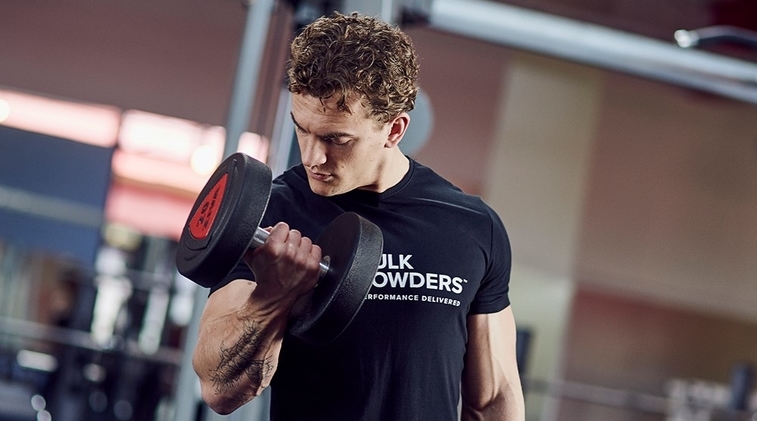Once you’ve served your apprenticeship in the gym, it’s time to look at advanced training techniques. Are supersets and dropsets right for you?
When you first start out, it’s important to spend enough time with training basics. But once you’ve got your head around exercise selection, and your body used to load and volume, what’s the next step?
It’s time for some advanced workout techniques to keep the progress coming.
There are countless ways to shake up your training once you’ve exhausted the newbie gains. But whichever methods you choose, it all comes down to the same thing: achieving progression by increasing one or more of the key factors of training. Those cornerstones of training are volume, intensity, and frequency.
When Is It Time To Use Advanced Training Techniques?
There is no definitive way of knowing when it’s the right time to move away from the basic introduction to gym life. Chances are you started off with 10-12 reps and a full body split with plenty of time for recovery. That’s a sensible, patience, consistent approach which will give your connective tissue and nervous system time to catch up with your ambitions and enthusiasm.
Once you find yourself itching to try new things, and/or you think you’re not seeing progress from your solid but basic routine, it’s time to think about advanced training techniques. These won’t necessarily replace the tried-and-tested basics, which will probably always be the foundation of your training. But they are a useful way to shake things up, or keep motivation high, so you can enjoy decades of fruitful sessions in the gym.
What Are Supersets & Dropsets?
Supersets refer to a pair of exercises which you do back-to-back without stopping. You would perform one set of Exercise A, then one set of Exercise B and so on. You can either take a rest after each superset (as you would with normal sets), or work right on through, using one of the sets as a form of active rest.
A dropset is the technique of reducing the weight you are using at the end of a set, and performing more reps. If you are on a cable exercise, move the pin up the stack. If you are on a plate-loaded machine or using a bar, remove one or more plates. If you are using dumbbells, move onto lighter dumbbells. This is typically done on the final set, but can be done multiple times for several sets.
5 Benefits Of Supersets & Dropsets
More volume for greater hypertrophy
Get more reps out – push past failure
Less rest between sets – work on your fitness and calorie burn
Boost motivation – less chance of getting bored by the same workout
Work antagonistic muscle groups in the same workout if you want to
How To Use Them In Your Training
There are two ways to use supersets: either to work the same muscle group, or to hit opposing muscle groups in the same session. And there are other options, too. You can pair up one heavy exercise with a lighter one, pair low reps and higher reps, pair a weighted exercise with a bodyweight move, or work antagonistic muscles in an intense pairing.
As you can imagine, supersets can ramp up the intensity and volume of a workout pretty quickly, minimising your rest periods and keeping the muscles under tension for longer.
Dropsets are useful at the end of a set, or even right at the end of a workout. Use them to get more reps out when you feel like you’ve reached failure at your working weight. At that point, you haven’t reached complete failure – you’ve just reached a point where you can no longer lift that load. So drop the load, and get more reps out. Dropsets allow you to overload the working muscle, add volume, and increase total time under tension.
Dropsets can be used for pin loaded machines, plate loaded machines, barbell work, or dumbbells. Some dropsets are easiest with a training partner to help you (a plate loaded leg press, for example). But you can easily dropset with dumbbells or pin loaded machines if you train by yourself. Remember to keep the time between portions of the dropset minimal – ideally, you would move seamlessly through each drop in weight.
You can do one dropset at the end of your final set of your final exercise. Or you can dropset every set of an exercise. If you’re feeling really nasty, try a triple dropset until you can’t even rep a relatively light weight. It’s a humbling experience!
Ready To Try It?
Superset for shoulders: push press and Arnold press
Superset for back: bent over rows and lat pulls downs/chin ups
Superset for quads: squats/leg press and leg extensions
Superset for hamstrings: stiff leg deadlifts and lying ham curls
Dropsets can be used on any exercise, but some of our favourites are “running the rack” for biceps curls or lateral raises, or stripping plates off a leg press for a brutal triple dropset.
Related articles
Looking to learn more? We believe that every person, with support, has the right to transform their lives through fitness. That’s why we’ve put together hundreds of articles with expert advice, all to help you on your fitness journey. Here our some more articles on muscle building, fitness and training.
Best tricep exercises How to get bigger triceps
Tips for bigger biceps Muscle building for beginners
Principles for building muscle mass Getting a six pack
Exercises to build bigger glutes What does catabolic mean?
How to choose a training split Guide to DOMS
















